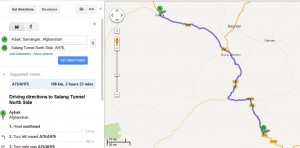US Wasting Money on Afghanistan Infrastructure While US Infrastructure Continues Decline
Joshua Foust tweeted a link to a story in today’s Washington Post about the most recent report from the Special Inspector General for Afghanistan Reconstruction. Foust’s tweet succinctly summed up the situation: “#SIGAR body slams the war in Afghanistan… again, and no one will probably ever care.” He followed that up with more: “This will destroy you if you dwell on it too much, but the blithe way DC encourages zero memory and zero accountability really is awful.”
Coming on the heels of the exposure of General William Caldwell’s disgusting 2010 coverup of hellish conditions at Afghanistan’s Dawood National Military Hospital in Kabul, it’s hard to see how Foust can be wrong in his pessimism. Where was the outrage over such horrid coniditions? Why is Caldwell still in the military?
The SIGAR report eviscerates the US counterinsurgency strategy that is based on the assumption that building a Western type of “infrastructure” will produce an Afghan populace that develops such adulation for the purveyors of such cultural “improvement” that they will immediately in fall in line with all other desires of the West.
The Post story opens:
A U.S. initiative to spend hundreds of millions of dollars on construction projects in Afghanistan, originally pitched as a vital tool in the military campaign against the Taliban, is running so far behind schedule that it will not yield benefits until most U.S. combat forces have departed the country, according to a government inspection report to be released Monday.
A few paragraphs later, we get more of the explanation of how the strategy was supposed to work:
Many U.S. military commanders, diplomats and reconstruction experts have long believed that large infrastructure projects were essential to fixing Iraq and Afghanistan.
The next sentence, however, suggests that David Petraeus saw through this strategy and understood what really mattered in the “battle for hearts and minds”: Read more →


